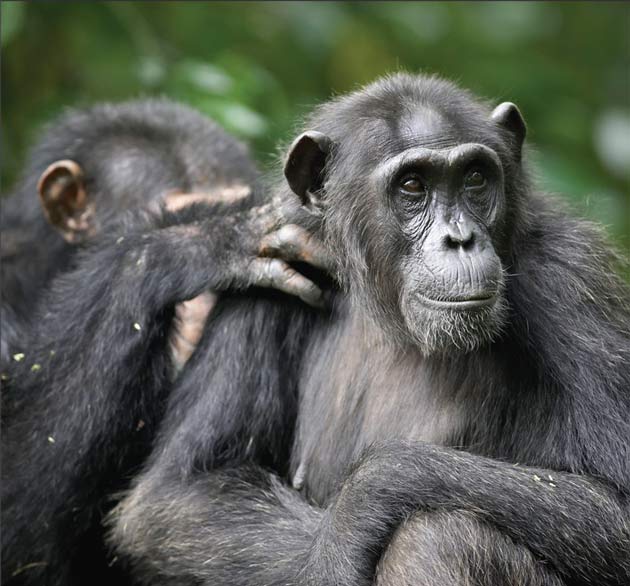Leafing Through Magazines, Chimps Exhibit Self-Control

Chimpanzees are masters of the sudden outburst, throwing apparent fits that can involve loud screeches and hurling things. But they also know how to control themselves.
When attempting to avoid temptation, chimps resist their urges by distracting themselves, a new study suggests.
The finding could shed light on the evolution of human self-control, researchers said.
Child's play
Even children know that delaying immediate gratification can lead to greater rewards. To unearth details on how self-control originated, psychologists Theodore Evans and Michael Beran at Georgia State University in Atlanta investigated chimpanzees, humanity's closest living relatives.
"Chimpanzees often are regarded as impulsive animals, prone to outbursts of aggression and other emotional behavior," Beran said.
The researchers tested four adult chimpanzees with a candy dispenser, which steadily delivered enticing sweets every 30 seconds. As soon as the apes reached to get the accumulated candy, the dispenser stopped delivering any more. This meant that if the chimps resisted their impulses, they would earn a greater award.
Get the world’s most fascinating discoveries delivered straight to your inbox.
Here's where the self-distraction came into play.
The chimpanzees also were sometimes given a set of toys, such as magazines, toothbrushes and rubber tubes. They were significantly better at coping with temptation when they could entertain themselves with toys.
"The magazines included some National Geographic, Entertainment Weekly, and Atlanta food and wine circulars, among others. The chimps would slowly page through the magazines, probably looking at the pictures—research suggests that they perceive pictures as real objects like humans do," Evans told LiveScience. "They used the toothbrushes as we would. They appeared to enjoy the bristle texture in their mouth and on their teeth."
Without toys, the chimps only held out for six-and-a-half minutes on average to get about 11 candies, but with toys, they waited 50 percent longer on average to get roughly 17 candies.
"Humans like to think that they can control themselves better than can animals, and yet this type of research suggests that the story is not that simple," Beran told LiveScience.
Control yourself
Beran noted that humanity portrays animals in general as unable to control their own behavior—hence our phrases "acting like an animal," and "animal impulse." But he added that humans also "show many impulsive, shortsighted behaviors, such as smoking, overeating and failing to save money for retirement."
The study could shed light on how self-control originated and developed among the great apes, a branch of primates that includes humans. "This research shows, again, the continuity between chimpanzees and humans, and suggests that some level of self-control was present in a common ancestor," Beran said.
Evans and Beran will detail their findings in the December issue of the journal Biology Letters and published their findings online Aug. 22.
- VIDEO: Jane Goodall's Wild Chimpanzees
- 10 Amazing Things You Didn't Know About Animals
- All About Monkeys



